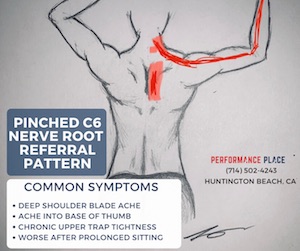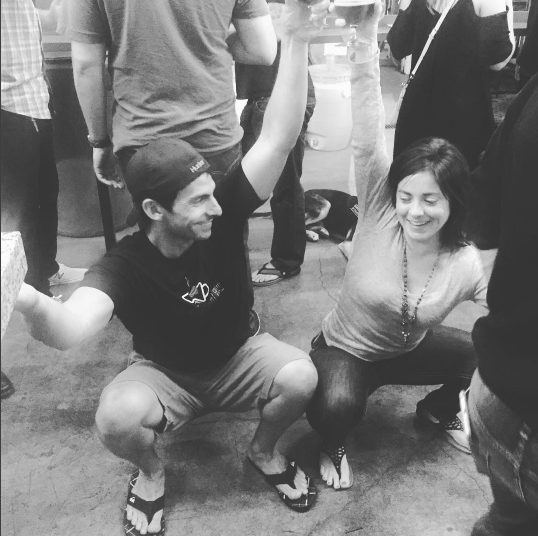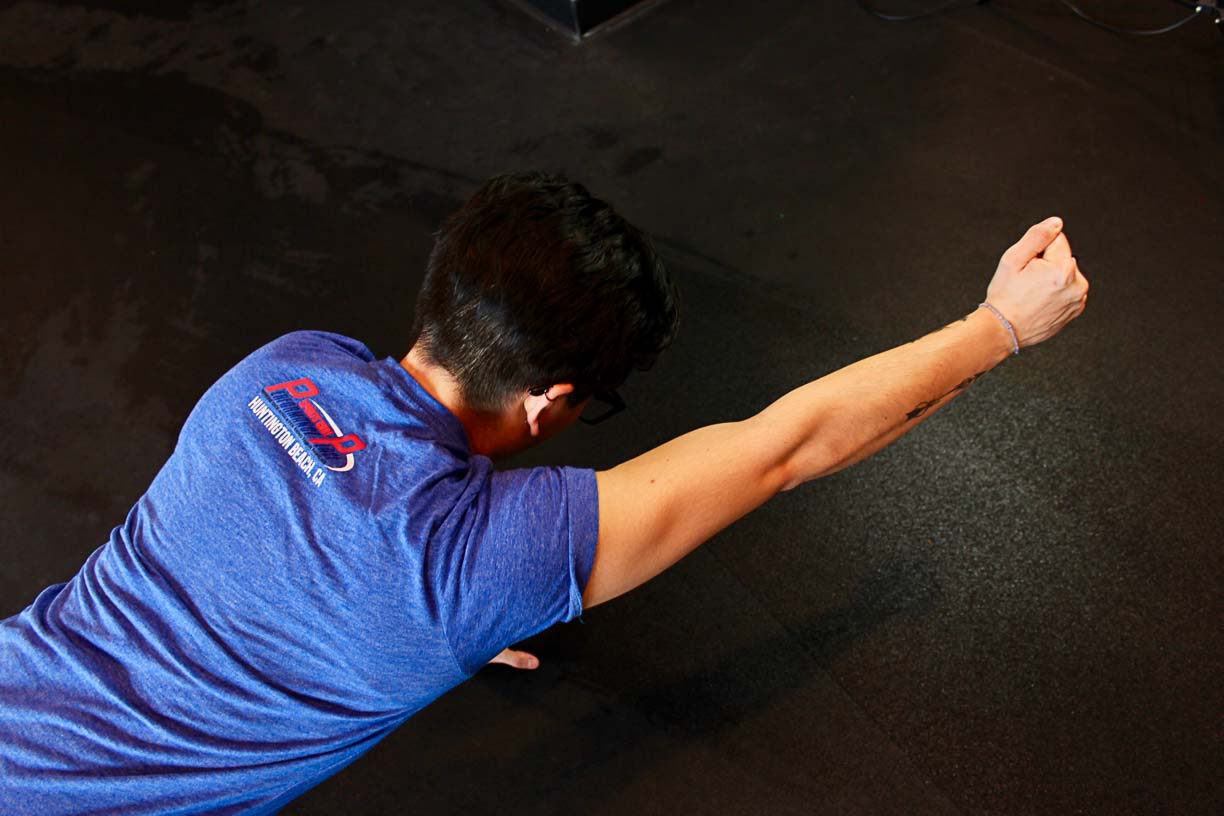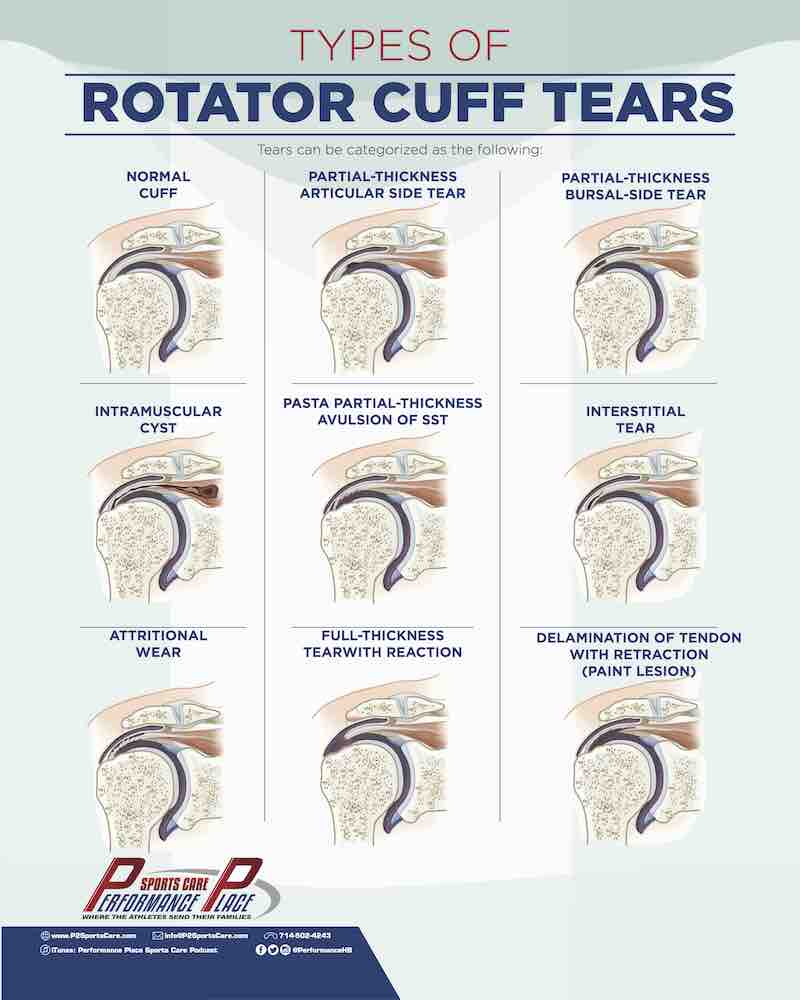This is a complete guide to the infraspinatus tear/ strain.
If you want to know what your treatment options are for an infraspinatus strain, you’ll enjoy the actionable tips in this new article.
In other words, you won’t be reading outdated suggestions that don’t work!
Note: read the disclaimer and always see a doctor first. If you need some help virtually (or in-person) the “Locally World Famous Chiropractors®” at Performance Place Sports Care are ready to work with you!
Let’s dive right in.
What Is The Infraspinatus Muscle?
The Infraspinatus muscle is one of the four rotator cuff muscles of the shoulder, with the primary function of stabilization of the glenohumeral (GH)l joint.
The muscle resides in a section of the shoulder blade called the fossa of the scapula and is innervated by the suprascapular nerve. The infraspinatus muscle-tendon is attached to the greater tubercle of the humerus bone.
Infraspinatus pain often presents as pain on the front side of the shoulder. Infraspinatus muscle and tendon pain began often without trauma, dubbed as an “overuse” injury.
Compression of the suprascapular nerve (or its contributing spinal nerve roots) can create tension and “strains” in the muscle. It will feel like a tight muscle that can’t be stretched out. The contributing spinal nerve roots that may be compressed, creating trigger points are C6 and C7.

C6 and C7 spinal nerve roots can also create associated symptoms of:
- Tricep ache
- Winging of the shoulder blade
- Weakness in a pushup or bench press
- Neck tension
- Tight pectoral muscles (more commonly the pectoralis minor)
- Sternal pain (without fatigue or shallow breathing – could be something else serious)
- Upper trapezius tightness
- Pain between shoulder blades (medial border)
While many of our clients end up having suprascapular nerve compression causing their infraspinatus pain, it is possible to have a local muscle/ tendon complex tear.
Before we go on to the topics of local strains, please do not overlook the possibility of nerve pressure causing your infraspinatus “strain.”
Here is a YouTube video we made about shoulder blade pain that can work with infraspinatus pain too. Enjoy!
Even when MRIs show degeneration or tears to the infraspinatus tendon, the nerve could be the root of the pain. Tears and degeneration do not always hurt, especially if overuse in origin.
The infraspinatus is the second most commonly torn muscle/tendon in the shoulder.
While it can be extremely disabling, it doesn’t have to be the reason you stop doing what you love.
The funny thing about rotator cuff injuries is that they’re commonly not painful.
That’s right. They are found via MRI and MSK Ultrasound in pain-FREE athletes all the time. Without going into too much detail, we have to consider why…
Are they just lucky? Nope!
Oftentimes, if we improve an athlete’s movement, we can also decrease infraspinatus pain and prevent future injury.
How?
By addressing the root reasons for glenohumeral joint dysfunction (shoulder joint) in the first place.
If you’re wondering who’s writing this section of the article…here I am!
I’m Dr. Sebastian Gonzales. I’m the head doc at Performance Place® Sports Care in Southern CA. Throughout this article I’ll be guiding you through the best collection of information on how to resolve infraspinatus pain on the Internet.
EXPECTATIONS WHEN YOU
COME SEE US IN COSTA MESA:
MORE THAN 50% IMPROVEMENT WITHIN 4-6 SESSIONS
Most Cases
MORE RELIEF WITH LESS RISK
We Only Use High Reward/Low Risk Treatments
NO RIDICULOUS LONG-TERM TREATMENT PLANS
MORE ATTENTION WITH A SKILLED GUIDE
Even Though our Costa Mesa Chiropractor are Not A "Real Doctor" 🙂
MORE THAN A TYPICAL COSTA MESA CHIROPRACTOR
No Bone Cracking Required To Feel Good
NO QUACKERY
Dr. Gonzales & Costantino Only Uses Current Evidence-Informed Methods
CLICK HERE TO BOOK YOUR APPOINTMENT WITH A COSTA MESA CHIROPRACTOR
It’s funny, after writing this article, I started to receive more emails from people just like you asking for a list of my favorite rehab exercises for an their infraspintus. For months I replied directly, because I love to help people overcome their aches and pains but it wasn’t sustainable for me… so I finally sat down to list out my 9 favorite exercise videos on how to quickly rehab an infraspintus issue.
You can access them here. If you’re looking to bypass, 4 more hours of reading and digging around through random Youtube videos buy the mini guide. I did all the work for you.
Now onto the article for those of you who enjoy reading.
Part 1: How To Rehab Infraspinatus Tendon Pain
Here’s the order of importance when it comes to infraspinatus pain (and shoulder pain in general). If we don’t correct dysfunction in this order, then we will not improve the shoulder. Period.
- Core and High Intra-Abdominal Pressure
- Thoracic and Cervical (neck) Mobility
- Shoulder Blade Stability
- Glenohumeral joint Motion

I’ve seen many shoulder cases and this process works. Sorry I couldn’t resist using the Overhead Beer Goblet Squat on my birthday as an example.
I can remember one patient specifically, a weightlifter who had been seeing a massage therapist for months and was still unable to lift a 45-pound barbell over his head without pain.
By using this method, I was able to improve his infraspinatus pain within minutes by improving his shoulder blade stability. And by improving it, I mean he was so excited, he hugged me. True story!
I’m not trying to toot my own horn, but I just want to bring to attention how quickly an infraspinatus injury can resolve if we are addressing the right things at the right times.
This is an example of a functional issue…not a structural issue. This can happen regardless of where the pain is.
Here’s an exercise I like to give to many people that I see with shoulder pain. Granted, it won’t work for everyone, but it helps many. It’s called a Turkish Get up (Extension to Low Sweep).
If you would like to see more, we do have a course coming out.
Where is the infraspinatus?
Anatomically speaking, the infraspinatus is found on the back, originating inferiorly along the spine of the shoulder blade (also known as the scapula) extending out and inserting onto the humeral head where it turns into a tendon. Just beneath the tendon, the infraspinatus bursa cushions it. Infraspinatus is part of the rotator cuff muscle group of the shoulder, and a infraspinatus tear (also known as a strain) can be the cause of pain within the shoulder joint.
There are three other muscles that make up the rotator cuff along with infraspinatus. They are:
- Supraspinatus
- Teres Minor
- Subscapularis
When we are considering shoulder pain, there are other structures that need to be ruled out as the painful source:
- Posterior joint capsule of the shoulder
- The glenoid labrum
- Subscapularis
Here’s a video we made years ago called “Infraspinatus Strain Pain Treatment Video.” It’s an oldie, but a goodie.
Part 2: Function Of The Infraspinatus And Who Tears It
More about the function of the Infraspinatus and who gets a strain of the Infraspinatus
The main function of infraspinatus is external rotation and stabilization of the shoulder joint along with elevation and depression of the shoulder. The first muscle susceptible to a tear within the rotator cuff muscles is the supraspinatus and infraspinatus is the second.
An infraspinatus tear is generally due to an overuse injury that stresses the shoulder joint and leads to both instability and joint laxity. Baseball and volleyball players are known to have this injury due to the demands made on the shoulder with constant overhead motion.
But it’s not just athletes that suffer with infraspinatus tears. Other repetitive stress motion injuries of this muscle and tendon can occur simply from driving with the arm held stretched out/extended on top of the steering wheel or from reaching back persistently with a computer mouse.
What kind of pain does an infraspinatus tear cause?
There are a few different symptoms that are possible:
- Pain radiating into the neck and upper back areas and down into biceps
- Inability to raise the arm above head because of stiffness and feeling numb
- Weakness in the shoulder
- Discomfort with sleep when rolling onto side

Chapter 3: Examination Of An Infraspinatus Strain
If you haven’t been to the doctor yet, you could be wondering why all of the odd “press into my hand” testing. This is a video series of some of the common tests you will see when you go in for a proper exam of the shoulder.
Together, these tests will guide your doctor to the correct diagnosis. Each video is very quick and at the end of each, I will tell you what each one is testing for.
Part 4: Infraspinatus Strain Symptoms & Treatments
How can an Infraspinatus Strain present and how can it be treated?
When observing the shoulder motion, the patient may experience pain throughout the full range of motion. Commonly known as the “arc of pain”, this is a positive indicator of a tear. Muscle weakness will develop secondary to the shoulder pain and you may also observe abnormal motion of the scapula.
If a tear is diagnosed, there will very likely be scar tissue built up along the tendon and around the infraspinatus bursa causing a catching or grinding motion of the shoulder. The degree of a rotator cuff tear is difficult to determine without imaging. The degree of pain does not always correlate with the severity of the tear; some patients may present with decreased range of motion and a great amount of pain while others may have no pain yet still have limited range of motion.
The first imaging test to look at is an x-ray. While it won’t be able to show any soft tissue damage, it is helpful in ruling out other conditions. An x-ray will tell you if there is any joint degeneration, impingement from an osseous (bony) structure, or arthritis in the joint.

Treatment is based on the severity of the tear and its impact on the patient’s activities and ability to function.
Possible treatments for an infraspinatus tear may include:
- RICE (rest, ice, compress, elevate)
- Surgery based on the severity of the tear to reattach the muscle tendon
- Steroid injections
- Non-Steroidal Anti-Inflammatory medications
- Addressing the scar tissue formation in the shoulder joint
- Stretching
- Rehabilitative strengthening exercises
The last two treatments are very important and should be a part of any treatment regimen for an infraspinatous tear. Without proper rehabilitative strengthening exercise for the shoulder and treatments to address the scar tissue, more disabling conditions such as frozen shoulder can occur.
Before beginning any strengthening protocol, the muscles should be warmed up properly. This can easily be done with stretching such as the doorway stretch or the “threading the needle” yoga pose.
There are a couple of specific exercises to strengthen the muscles associated with an infraspinatus tear:
- Resistance band- external rotation motion
- Face pulls
- Side Planks
Approximately 6 to 8 weeks of treatment will be needed, depending on the severity of the injury, in order to both decrease the pain and strengthen the muscles.
How Can We Help You?
How does the Performance Place treat a Infraspinatus Strain?
At Performance Place® Sports Care, we approach injuries in a conservative manner that will give the patient the most weighted benefits. Our providers are board certified chiropractors and certified in full body Active Release Technique. Dr Gonzales is a certified Sports Chiropractic Physician and Musculoskeletal Sonographer.
We examine the patient and determine the most efficient and quickest treatment plan for each based on our evaluation. Our goal is to not only to get the athlete back out on the field doing what they love to do, but to also enhance their athletic performance in the process. We perform treatments that address the scar tissue that has built up from micro-tears in the tissue due to overuse or previous injuries as well as develop and implement a program to strengthen and train the muscles to be used functionally.

Most all of our patients feel results within a few treatments. Decreased pain, increased range of motion, strength, and balance are all gained through our comprehensive approach. We then move into the second phase of treatment with strength and conditioning training, which is the most important aspect of the treatment and is designed to prevent future injuries.
In summary, to address an infraspinatus tear:
- We will address the scar tissue of the primarily involved muscle in addition to any associated muscle or bursa.
- We teach proper warmup and stretching of the shoulders.
- Lastly, we will strengthen and condition the shoulder to prevent future injury (sport-specific functional training)
Check our online scheduler to book an appointment today
Works Cited
Majority written by Dr Tabassum Ali DC
Itoi, Eiji. “Abstract.” National Center for Biotechnology Information. U.S. National Library of Medicine, 01 Dec. 2013. Web. 01 Apr. 2013. <http://www.ncbi.nlm.nih.gov/pmc/articles/PMC3607722/>.
Infrapsinatus muscle. Digital image. N.p., n.d. Web. 02 Apr. 2013. <http://www.rad.washington.edu/academics/academic-sections/msk/muscle-atlas/upper-body/infraspinatus/atlasImage>.
“Rotator Cuff Tear.” Rotator Cuff Tear. Seacoast Orthopedics & Sports Medicine, n.d. Web. 02 Apr. 2013.
Hadim, Mehdi. “How to Deal with Shoulder Injuries: The Infraspinatus | StrongLifts StrongLifts.” StrongLifts RSS. Sandbender, 12 Feb. 2008. Web. 02 Apr. 2013.
